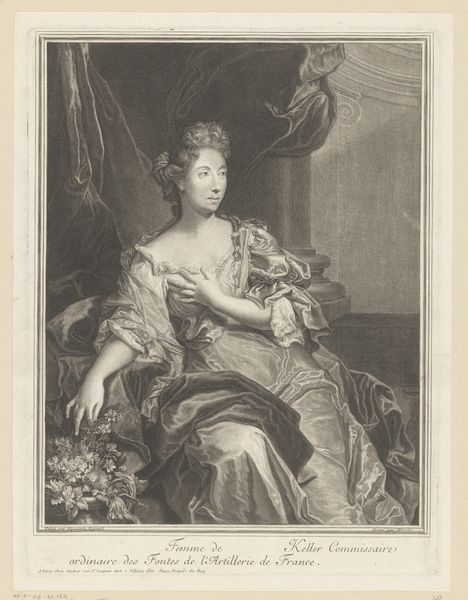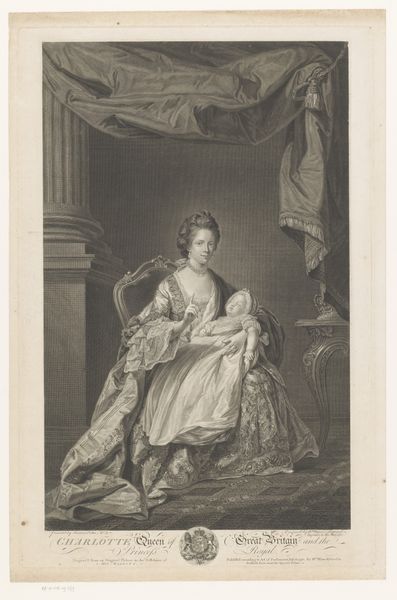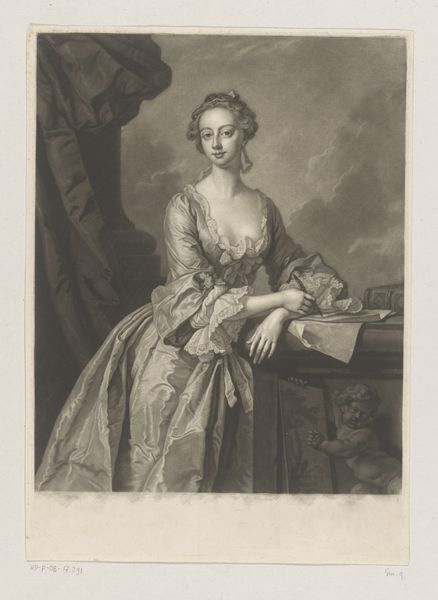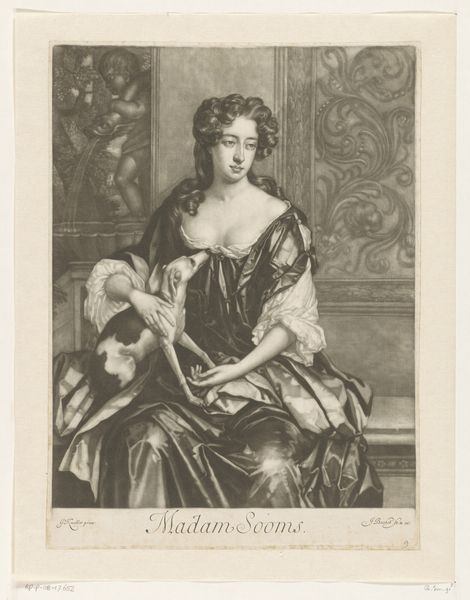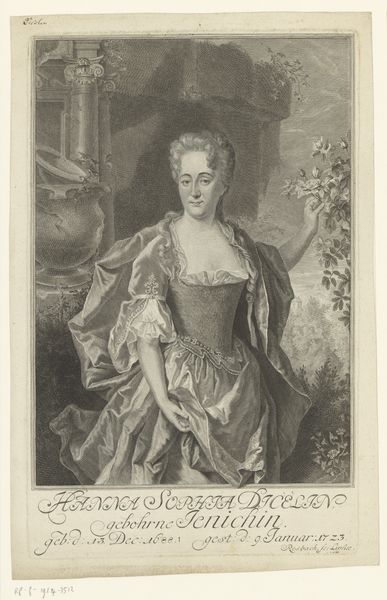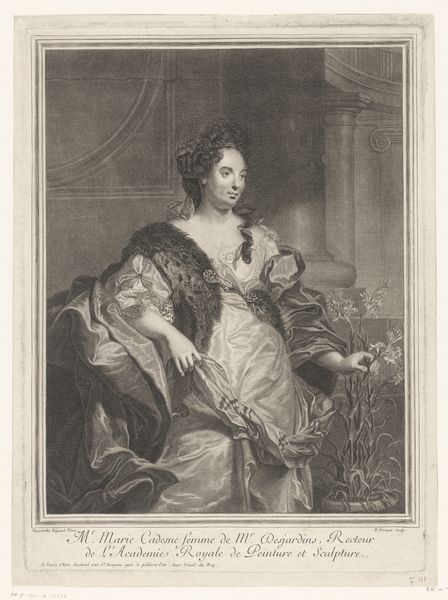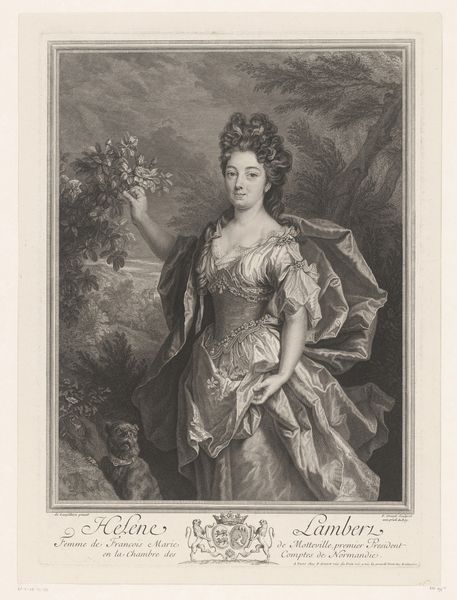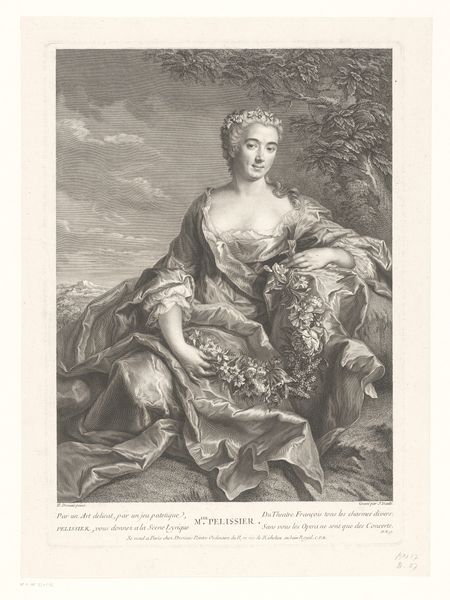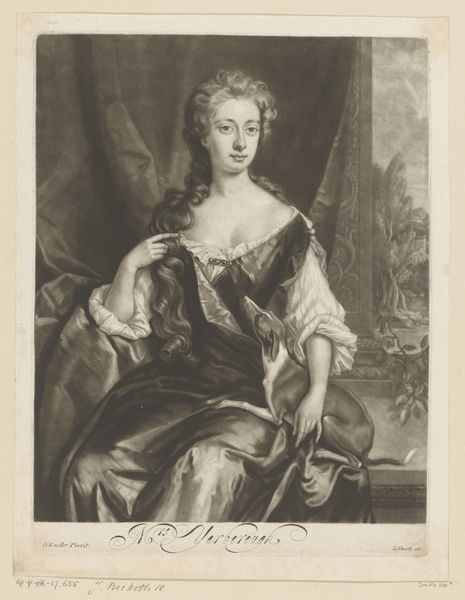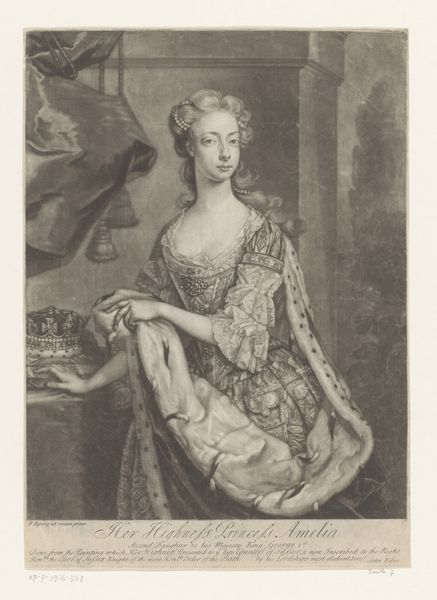
engraving
#
portrait
#
baroque
#
old engraving style
#
portrait reference
#
old-timey
#
19th century
#
history-painting
#
engraving
Dimensions: height 412 mm, width 268 mm
Copyright: Rijks Museum: Open Domain
Curator: Immediately, I’m drawn to the delicacy and fineness of the lines in this engraving, "Frederica Henriette van Anhalt," made sometime between 1721 and 1723 by Martin Bernigeroth. What’s your first reaction? Editor: The heaviness, really. All that ermine and the weighty drape of fabric… the expectation and expense of that. You can almost feel the labor and consumption embedded within those textures. Curator: It's interesting you see it that way. From my perspective, it’s more about the visual rhythm: the interplay of light and shadow achieved through those very deliberate etched lines. It structures a certain aristocratic sensibility. Note, for example, the gaze, positioned just so... Editor: Right, but consider the sheer material involved in producing this image. The engraver had to have access, firsthand or through a reproductive drawing, to luxurious textiles, aristocratic settings... the networks of artisans feeding the desires of the ruling classes are tangible. Think of the engraver's painstaking labor, versus the comparatively easy accumulation of wealth Frederica enjoyed to be the focus of that labor! Curator: That is a valid consideration, certainly, but isn't there also something compelling about the artist transforming these tangible aspects into pure visual language? Look at how he uses hatching and cross-hatching to mimic the qualities of fabric. I find the surface itself so engaging, its tonality, its detail... the way form becomes abstracted. Editor: The formality you're discussing definitely reinforces existing power dynamics through artistic representation. Consider the historical context here—how many people's livelihoods went into sustaining that visual rhetoric. What we call visual language carries immense economic weight. Curator: And yet, this engraving preserves a particular image, offering insight into Baroque aesthetics through a specific, formal structure. Editor: Absolutely. And understanding that structure depends on recognizing the labor that underpins the representation itself, in addition to the subject’s place in a network of luxury. Curator: Ultimately, for me, it returns to the artistry, Bernigeroth's hand bringing forth a very particular ideal, transforming lead and ink into lasting presence. Editor: Agreed. And perhaps lasting understanding emerges by seeing the web of material circumstances that elevates any one hand, or any one image.
Comments
No comments
Be the first to comment and join the conversation on the ultimate creative platform.
